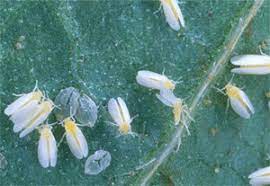By Clint Thompson
Sub-freezing temperatures this past weekend impacted specialty crop production across the Southeast. But they also helped producers with managing the pest populations, specifically whiteflies.
Bob Hochmuth, University of Florida Institute of Food and Agricultural Sciences (UF/IFAS) Regional Specialized Extension agent in Live Oak, Florida, discusses the significance that the cold temperatures had on the pest.

“This is the kind of weather that, on the one hand, we kind of hoped for, that we can knock back some of this pest population that lingers even up here in North Florida in a warm winter. We absolutely needed to have some cold weather to give us a break and break some of those pest cycles and push them back further,” Hochmuth said. “What I suspect will happen is we have done a good job of reducing that population here, and it’ll mean they’ll have to come from further in south Florida to get here. They were killed back to some degree down the state of Florida. If we don’t get a cold hard killing freeze here, they don’t have far to go.
“If there is a win in the deal, we need a little bit of a winter season up here to help break those cycles.”
Warmer temperatures during the cold months of December, January and February allow for larger whitefly populations to overwinter and become active earlier than normal. While colder temperatures don’t eliminate whiteflies, they do kill off many of their wild hosts and slow population development in cultivated hosts.
Whiteflies can also transmit cucurbit leaf crumple virus and cucurbit yellow stunting disorder virus. According to University of Georgia crop loss estimates for fall 2017, these viruses caused between 30% and 50% of crop loss in squash and cucumbers and nearly 80% of crop loss in snap beans.
They are difficult to control because of their prolific reproductive cycle. A female can lay between 150 and 200 eggs, and it only takes those whiteflies two to four weeks to mature into the adult stage and begin reproducing.










